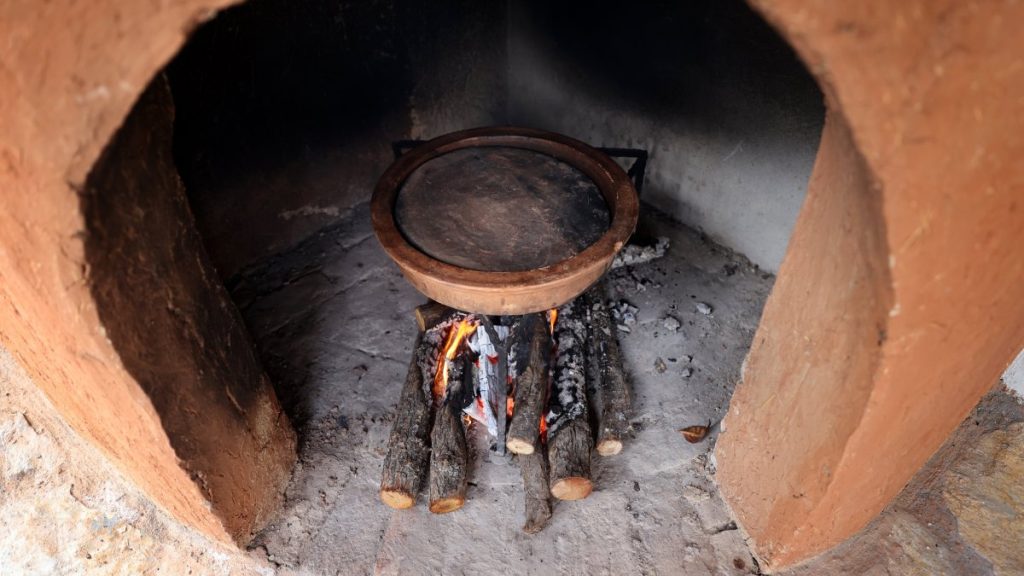In Konya, central Türkiye, inspired by the “8,600-year-old bread” found in the Neolithic settlement of Çatalhöyük, where the grains were identified through scientific analysis, chef Ulaş Tekerkaya baked bread made from peas, barley, wheat and faba beans.
In the excavation conducted two years ago at Çatalhöyük, located in the Çumra district, a charred spongy find was analyzed at Necmettin Erbakan University’s Science and Technology Research and Application Center (BITAM). The analysis revealed that this find, dating back to approximately 6,600 years before Christ, was “leavened bread.”
After this exciting discovery, both in Türkiye and internationally, chef Ulaş Tekerkaya, who was curious about the taste of the “8,600-year-old bread,” wanted to bring it back to life today.
Previously, Tekerkaya, with the support of the excavation team and academics from Necmettin Erbakan University, published a work titled “Neolithic Age: 9,000-Year-Old Culinary Culture,” where he collected the majority of the grains from the region to recreate the bread.
According to the analysis published by the excavation team in the “Çatalhöyük Area 66 Neolithic Period Bread Findings Analysis and Evaluation,” Tekerkaya worked to produce the bread containing various grains. He conducted numerous trials to recreate the form of bread from 9,000 years ago.
Using a volcanic grinding stone called a hand mill to grind the grains, Tekerkaya baked the dough (dough balls) over a wood fire at the Meram City and Culture Museum.
In an interview with Anadolu Agency (AA), Tekerkaya stated that his work on Çatalhöyük’s cuisine had earned a global award in gastronomy. Reflecting on the preparation of a menu aimed at bringing the region’s 9,000-year-old culinary culture to life, Tekerkaya said, “After the discovery of the bread, I was excited to make it. After about a year of trials, the bread’s final form is like this. Initially, it was too hard and had a bitter taste, but after many trials, I adjusted the recipe and baked a tasty product. It’s very delicious and filling.”
Tekerkaya thanked professor Ali Umut Türkcan, the head of the excavation team, stating, “They shared the scientific analysis results. I believe that this bread, similar to the flatbreads still baked in Anatolia today, will contribute to passing on a healthy and nutritious bread to future generations. The bread contains peas, barley, wheat and faba beans.”
Professor Yasin Ramazan Eker, deputy director of BITAM, noted that the chemical and physical structures of archaeological samples could be defined at the center. Eker explained that they contributed to the work using advanced analytical devices at BITAM, determining the chemical and physical structure of the bread sample.
Salih Kavak, a lecturer from Gaziantep University, who contributed to the analysis of the find, stated that the legumes in the bread helped accelerate fermentation. He added that the bread contained barley, wheat, peas and faba beans and that the academic study was ongoing.
Petek Zülal Güleç, one of those who tasted the bread, remarked that the variety of grains in the bread was striking, saying, “It’s nothing like today’s bread. It doesn’t need honey, butter, or jam. This is very delicious. We can see that our ancestors always knew what was best.”
The head of the excavation team, professor Ali Umut Türkcan, said in a statement on March 5, 2024, “The small, round, spongy find in the corner of the oven was carefully documented and identified as bread. Radiocarbon tests conducted at TÜBITAK Marmara Research Center showed that our sample dates back to approximately 6,600 years before Christ.”


